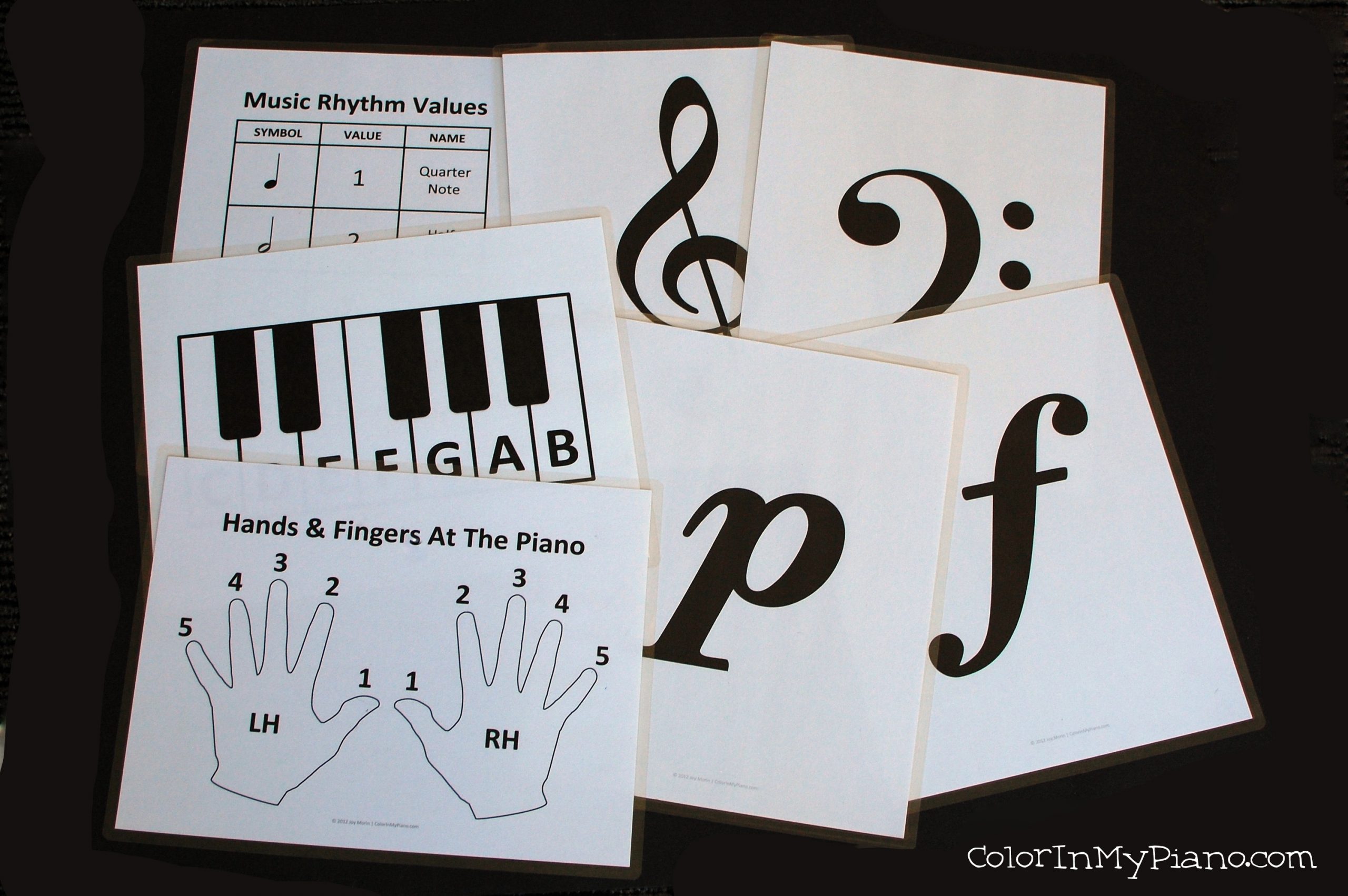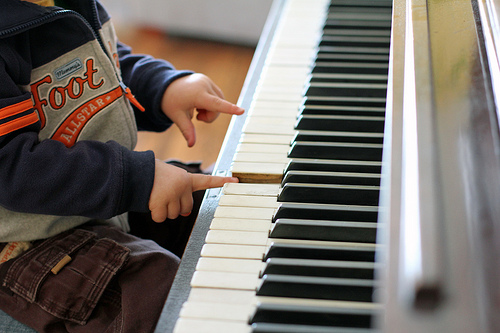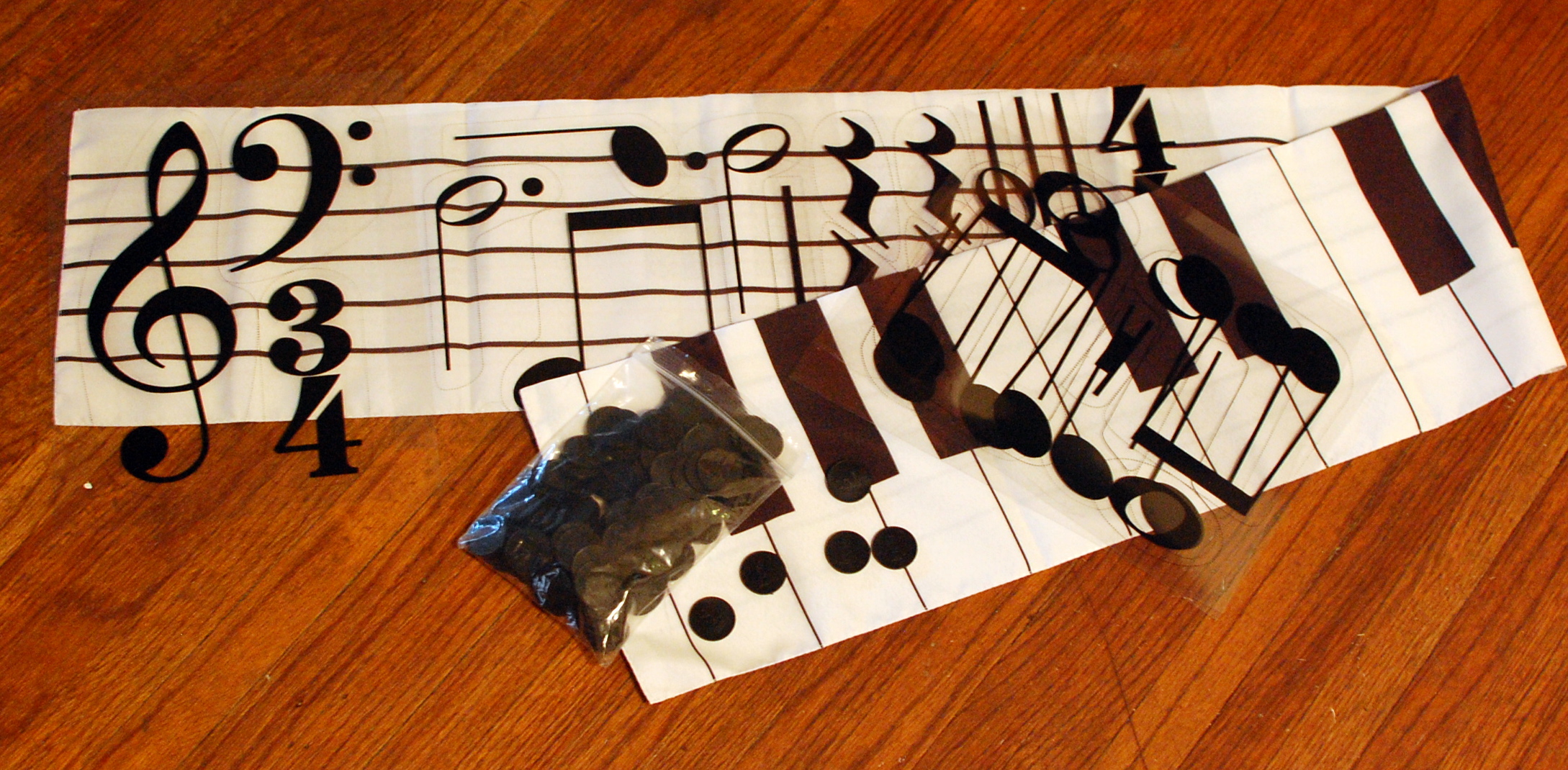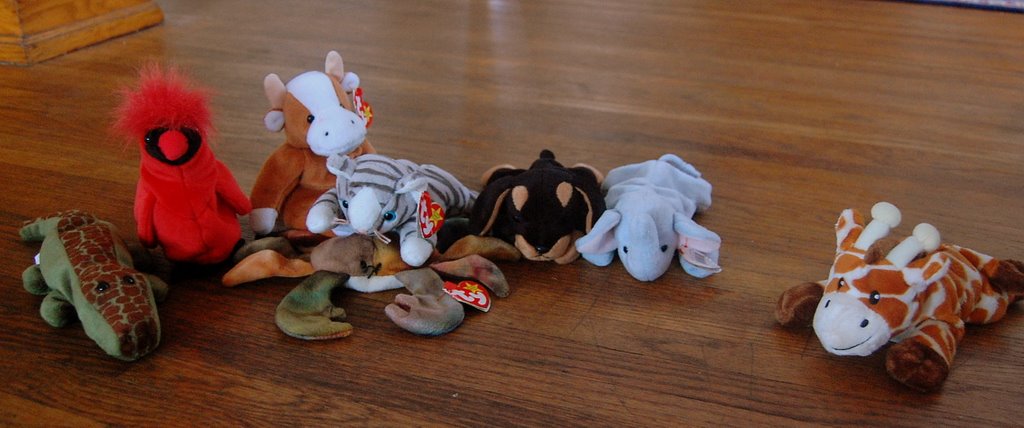Over the last few months, I’ve created a collection of signs to use with my Piano Readiness and Homeschool Music classes:
I use them during class when I am teaching or reviewing concepts. They can be useful for games too. For example, I like to have students hold up or point to the correct symbol while I improvise high/low or loud/soft music on the piano. I printed them on cardstock and laminated them to make them more durable.
There are other ways to use these signs: They can be printed for beginner private students to keep as a reference. Or, they can be hung up in on the wall in your studio.
You can download the pdf by visiting the Printables > Other Resources page and scrolling down to the S’s for “Signs for Beginner Piano.” I hope you can find some way to use these with your students!









